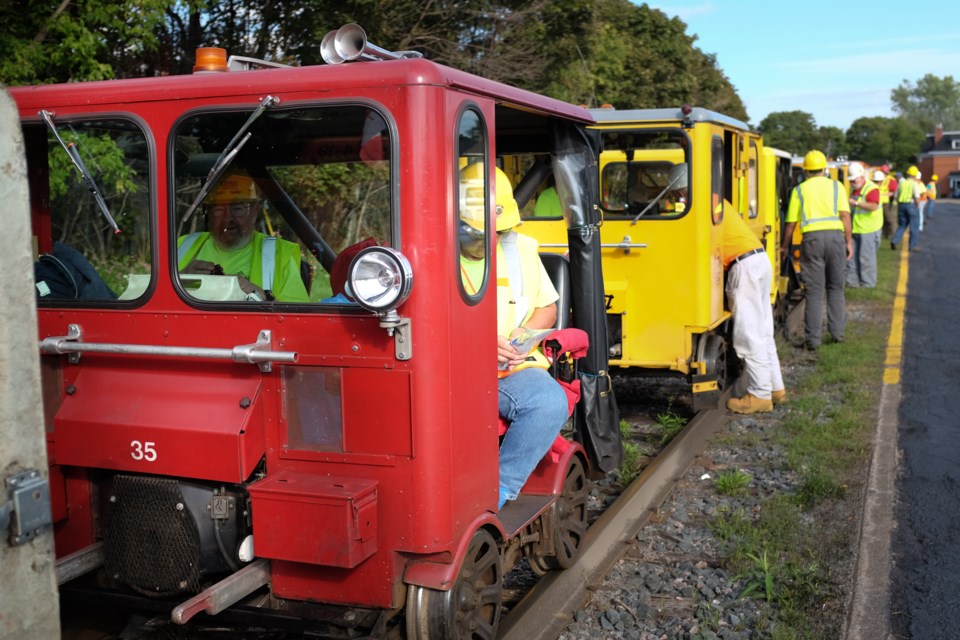For the first time in years a parade of railroad motorcars, or ‘speeders’, came through Sault Ste. Marie this week as part of an excursion by the North American Railcar Operators Association (NARCOA).
Motorized railcars are what most railway lines used to maintain and inspect tracks before the 1990s when pickup trucks fitted with railway track wheels - known as Hy-Rail vehicles - became the standard.
They’re often called ‘speeders’ because although they’re slower than a car or a train, at a top speed of around 48 kmph they’re faster than the old-fashioned hand-pump cars they long ago replaced.
26 of these small and colourful vintage rail vehicles drove along the Huron Central Railway (HCR) from the Sault to Espanola on Wednesday and after spending the night they came back again on Thursday.
The trip was a special one for the group since NARCOA hadn’t been on the HCR since 1999 as it was closed to them for line maintenance.
The group of enthusiasts from as far away as California, Arizona, and Saskatchewan haven’t been in the Algoma region since their last Algoma Central Railway (ACR) trip in 2010.
“It’s always great to come back to the Sault; it’s a great transportation hub. There’s ships, trains, the bridge, Soo Locks Boat Tours, the Bushplane Museum... and of course there’s always Tim Hortons,” said excursion coordinator Michael P. Ford.
Ford, who’s been with the group since 1997, said over the years he’s ridden the ACR 13 times on railway motorcar excursions and 20 times on the former ACR passenger train.
NARCOA has asked CN if they could rent the ACR track every year since 2010 however they’ve been denied each time.
Ford said the ACR trip is his favourite out of around 30 different railway lines he’s personally taken his railroad motorcar on.
"Once you hit milepost 45 you start getting into lakes like Lake Ogidaki. It’s nice as you wander through waterways; go through rock cuts, you go over the trestle at Montreal Falls… You get to see rocks, mountainous plains, forest, lakes, and farmland - there's just a great variety of landscapes,” gushed Ford.
A typical NARCOA trip up the ACR would take four days: Day 1 from the Sault to Hawk Junction, the next day to Hearst, and then the same trip but in reverse on Days 3 and 4.
The HCR trip this week started Wednesday morning in the Sault, and then made stops in Bruce Mines, Blind River, and Spanish before ending in Espanola where they spent the night and then rode back Thursday.
Owners of railway motorcars typically only use the vehicles for recreation.
The vehicles are usually salvaged and then fixed up by their owners.
“Most people get it from (someone) who’s gone to the trouble to go to a railroad and get it out of the weeds or from a scrap yard somewhere. Some railroads cut them up when they were done with them and others sort of sidelined them and left them to rot,” said Brian Davis, editor of The Setoff, NARCOA’s official publication.
A vehicle fresh out of the weeds might be worth $1,000 or $2,000 while one that has been pristinely restored can fetch up to five times those prices said Davis.
NARCOA has around 1,800 members across the continent.
